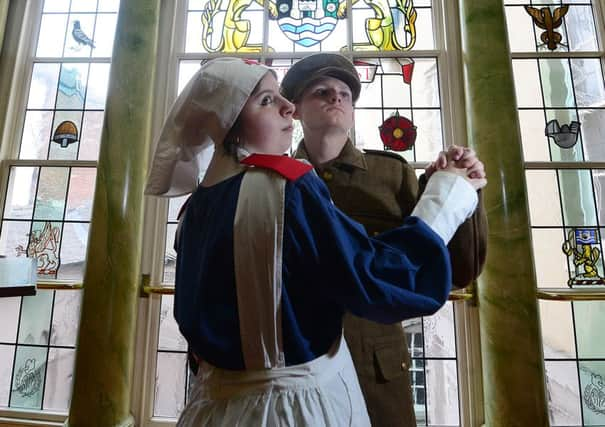Bringing Doncaster's lost wartime world back to life


But now a new generation is helping to bring the lost wartime world back to life.
Students from University Centre Doncaster are employing skills from dance to computer games design and drama to video production to recapture the town’s Home Front from 1914 to 1918.
Advertisement
Hide AdAdvertisement
Hide AdAs trainloads of rookie soldiers left for the front, those left behind rallied to the war effort.
Military hospitals opened, relief committees were formed and thousands of women took up jobs in munition factories.
As the war wore on the death toll lengthened, leaving scarcely a family untouched. More than 5,000 men were lost.
This evening, people can watch a performance inspired by the real-life history of the Mansion House, which was where conscientious objectors appealed against conscription during the First World War.
Advertisement
Hide AdAdvertisement
Hide AdAnd next Tuesday students will recreate an American-themed tea dance at the Mansion House based on fundraising events held during the Great War. Records show that locally more than £1.25m was raised in subscription to War Loans.
One historian wrote: “No appeal went unanswered. The heart of the town was stirred and its hand was ever open.”
The students are among groups involved in a four-year Doncaster 1914-18 project, which secured £926,000 from the Heritage Lottery Fund and includes family events, touring displays, exhibitions and education initiatives.
The project has been digitising the military and community records held in Doncaster’s museums, libraries and archives while a series of exhibitions, The Great War on Tour, will bring information to towns and villages throughout the former West Riding.
Advertisement
Hide AdAdvertisement
Hide AdProject manager Jude Holland said: “I think the students have been struck by how different the experiences are of young people with all the freedoms they enjoy and those who had such great responsibilities forced on them from a young age.
“We wanted to draw on the creative skills of a new generation, and it’s been a privilege to see them engaging with their heritage in such imaginative ways.”
She added: “There are no surviving veterans left but we have come across a lot of people whose parents were in the First World War and they are now getting quite old, so it’s really important to be able to capture that first- hand testimony.
“We’ve already had some fantastic stories shared including a lady who bought us a cigarette case which belonged to her father that had shrapnel encased in it that saved his life.”
Advertisement
Hide AdAdvertisement
Hide AdOn July 1, the centenary of the first day of the Battle of the Somme, a special service will be held at Doncaster Minster, with displays from history groups and involvement from schoolchildren.
From July 16, Cusworth Hall will host an exhibition exploring how life changed for servants and families in the region’s country houses, with recorded extracts from wartime letters and poems by drama and music technology students.
Harry Patch, from Wells in Somerset, was the last surviving combat soldier of the First World War in any country.
But his death on July 25 in 2009 at the age of 111 signalled the end of an era.
From holiday camp to hell...
Advertisement
Hide AdAdvertisement
Hide AdOn August 4, 1914, Doncaster’s Territorial Battalion, the 5th King’s Own Yorkshire Light Infantry, was recalled from its holiday camp and put on a war footing.
Locals had never seen anything like it – armed men tramping through the town and bivouacking in the open. Conscription came in for men aged over 18 in 1916.
John Hubert Brocklesby, a conscientious objector from Conisbrough, was among those sent to Richmond Castle and sentenced to death in France, although the sentence were later commuted.
As the war progressed, hospitals, volunteers and relief committees set to work. Nearly every factory in the town headed by the Plant Railway Works began making munitions.